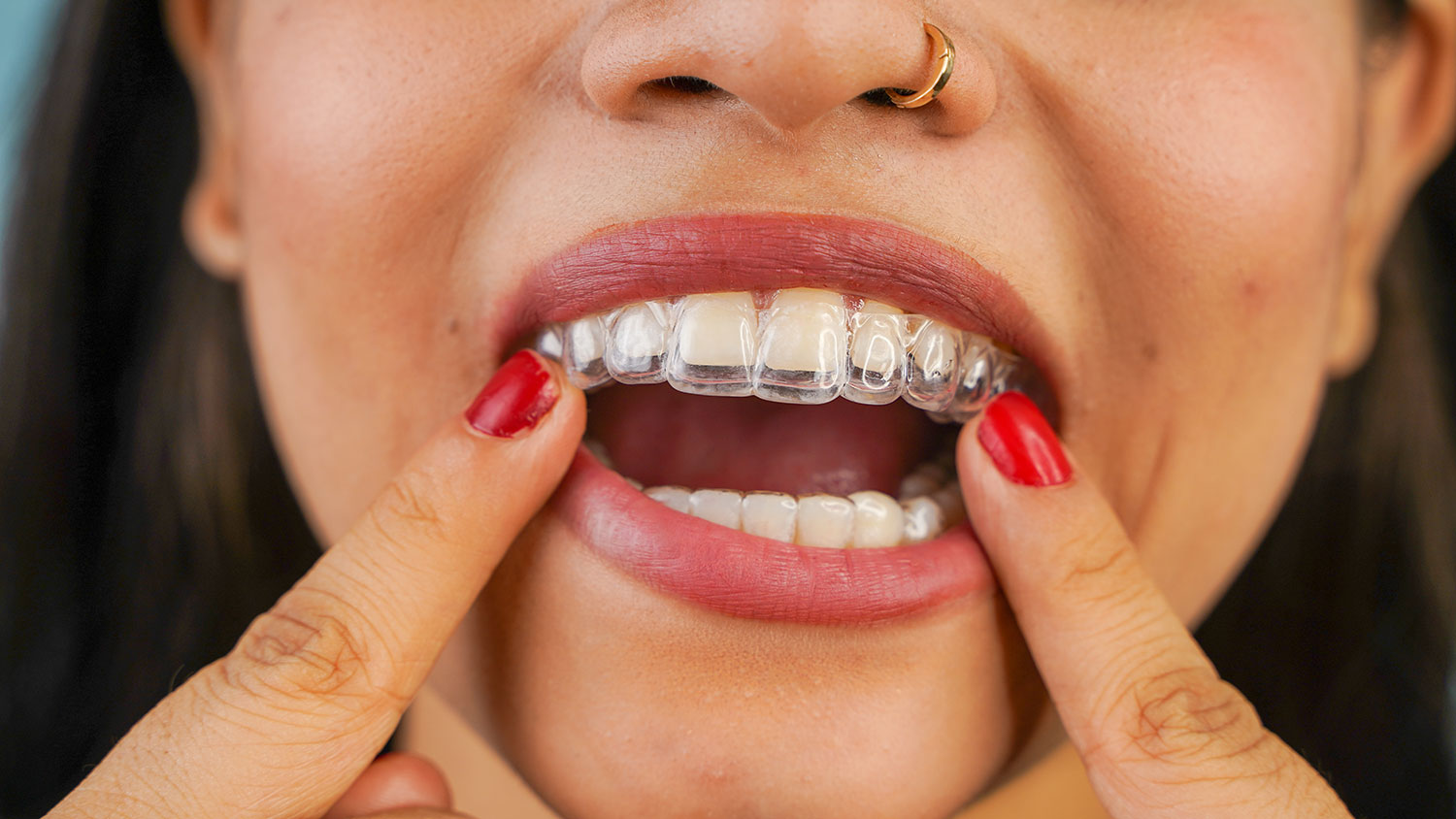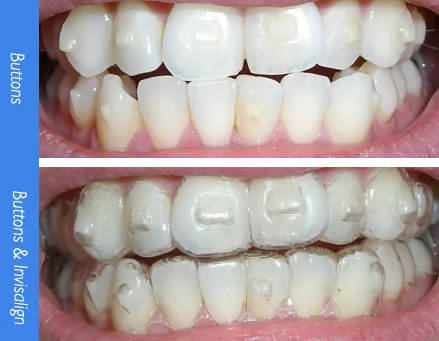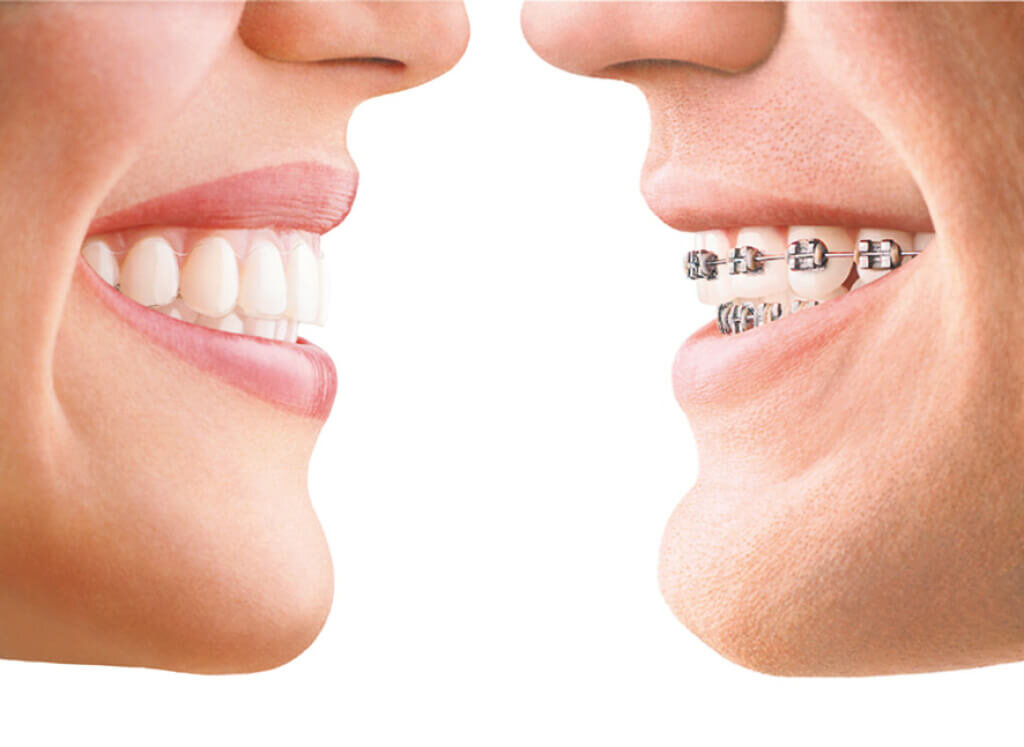Discover the Conveniences of Invisalign for a Perfect Smile Makeover
Discover the Conveniences of Invisalign for a Perfect Smile Makeover
Blog Article
Invisalign vs. Conventional Braces: Which Choice Is Right for You?
When considering orthodontic treatment, the option between Invisalign and traditional dental braces presents several essential elements that merit careful analysis. Invisalign uses a discreet alternative with removable aligners, while conventional braces supply an extra noticeable yet effective service for extreme imbalance. Each alternative encompasses unique advantages and downsides related to looks, convenience, treatment duration, and cost. Recognizing these nuances is critical for making an informed choice that aligns with your individual choices and way of living. The inquiry remains: which alternative will ideal fulfill your orthodontic requirements and assumptions?
Review of Therapy Options

On the other hand, traditional dental braces contain steel brackets and cables that are bonded to the teeth. This approach applies continuous pressure gradually to achieve alignment. While effective for intricate orthodontic issues, standard dental braces need routine check outs for changes and can pose difficulties in preserving dental health because of the difficulty of cleaning up around cables and braces.
Both options have their advantages, and the choice commonly rests on particular dental conditions, lifestyle choices, and person conformity. Ultimately, seeking advice from an orthodontic professional is vital for determining one of the most appropriate therapy strategy tailored to individual requirements. Understanding the nuances of each choice can significantly affect the overall success of orthodontic treatment.
Visual Considerations
A significant aspect affecting the option between Invisalign and standard braces is the aesthetic appeal each therapy uses. Invisalign aligners are crafted from clear plastic, making them practically unnoticeable when put on. This very discreet appearance is especially appealing to teenagers and adults that might feel uncomfortable regarding their orthodontic treatment. The capability to keep a natural smile throughout the positioning procedure can dramatically enhance the person's self-confidence in social and professional settings.
In comparison, conventional braces are composed of steel brackets and cables, which can be a lot more obvious. While advancements in orthodontic innovation have actually resulted in the advancement of smaller sized braces and tinted elastics, conventional braces still preserve a more obvious account. For some people, the visibility of dental braces might hinder them from looking for required therapy.
Inevitably, the choice in between Invisalign and traditional braces may depend upon personal choices concerning aesthetics. Patients who prioritize discernment often lean towards Invisalign, while those who are much less worried about visibility might go with standard dental braces. Understanding the visual effects of each choice is essential for making an informed choice that straightens with one's lifestyle and preferences.
Comfort and Convenience

In regards to comfort, Invisalign aligners are detachable, allowing people to appreciate their favored foods without restriction and keep ideal dental hygiene. Brushing and flossing are simplified, as the aligners can be secured throughout these regimens, whereas traditional braces require cautious maneuvering around wires and brackets.
In addition, Invisalign's modern system permits fewer orthodontic brows through. Individuals typically receive several collections of aligners simultaneously, which can streamline the therapy process and decrease time spent in the orthodontist's chair. On the other hand, standard dental braces demand routine adjustments, making them much less practical for those with hectic timetables. Invisalign. Overall, click to read the convenience and benefit of Invisalign make it an attractive choice for several individuals seeking orthodontic therapy.
Therapy Period and Efficiency
While both Invisalign and traditional braces work in dealing with oral imbalances, the period of treatment can vary substantially between both alternatives. Normally, Invisalign therapy can take anywhere from 12 to 18 months, depending on the complexity of the case. The clear aligners function by gradually changing teeth right into their desired positions, and regular follow-ups with an orthodontist help make certain progress continues to be on the right track.
In contrast, traditional braces usually need a longer dedication, generally ranging from 18 months to three years. This is due to their fixed nature and the use of wires and brackets, which can be extra reliable for complicated instances and severe imbalances (Invisalign). The therapy efficiency of conventional dental braces is well-documented, as they enable exact changes and greater control over tooth motion
Inevitably, the selection between Invisalign and standard dental braces may depend upon both the anticipated therapy period and the specific oral problems at hand. Consulting with an orthodontist is important, as they can supply customized recommendations based on private requirements, making certain the selected method lines up with preferred durations and end results.
Price Comparison and Insurance Coverage Options
Cost plays a considerable duty in the decision-making procedure for people considering orthodontic therapy, whether selecting Invisalign or here are the findings typical braces. Usually, the cost of Invisalign arrays from $3,000 to $8,000, while traditional braces normally set you back in between $2,000 and $6,000. Aspects influencing these expenses consist of the intricacy of the case, the duration of treatment, and geographical place.
Many dental insurance strategies supply partial coverage for orthodontic therapies, but the specifics can differ commonly. Normally, conventional braces may be much more often covered by insurance strategies compared to Invisalign, which some insurance companies classify as a cosmetic procedure.
Additionally, several orthodontic techniques provide flexible settlement plans, making both therapy alternatives much more available. Individuals should ask about potential funding options and discounts for ahead of time payments. Assessing the complete price, consisting of insurance benefits and payment strategies, is necessary for making an informed choice that lines up with both aesthetic choices and spending plan factors to consider.

Verdict
In recap, the option between Invisalign and conventional dental braces pivots on several elements, including visual choices, convenience, treatment period, and expense. Invisalign offers a discreet, detachable option that facilitates dental hygiene and nutritional versatility, while traditional braces might be better for complicated oral problems and usually come with a reduced cost point. Inevitably, consultation with an orthodontist is important to examine private circumstances and figure out the most appropriate therapy alternative for achieving optimum dental placement.
When considering orthodontic therapy, the choice between Invisalign and traditional dental braces offers numerous important variables that warrant cautious evaluation.Contrasting Invisalign and conventional dental braces exposes distinctive therapy options for orthodontic improvement.While both Invisalign and conventional dental braces are reliable in dealing with dental misalignments, the period of therapy can vary significantly between the two options.Cost plays a significant role in the decision-making process for people taking into consideration orthodontic therapy, whether choosing for Invisalign or traditional braces.In recap, the option in between Invisalign and standard braces pivots on multiple aspects, including visual choices, convenience, treatment period, and expense.
Report this page